Melasma During Pregnancy: 11 Safe Home Remedies
Effective techniques to limit the appearance of pregnancy-induced pigmentation.
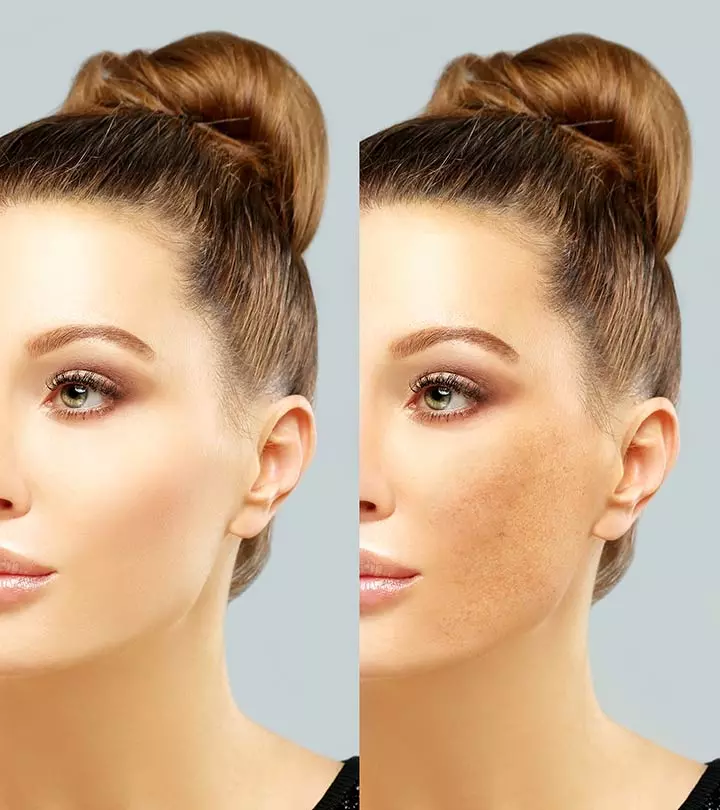
Image: Shutterstock
Pregnancy is a beautiful journey. But there are several things that you may not enjoy during this phase, like pigmentation during pregnancy or melasma. Melasma often appears during pregnancy and is considered frustrating and annoying. However, it is a common condition that is not a cause of concern.
Also, you can manage melasma easily. Wish to know how to manage it? Let us find out. Scroll down!
In This Article
What Is Melasma?
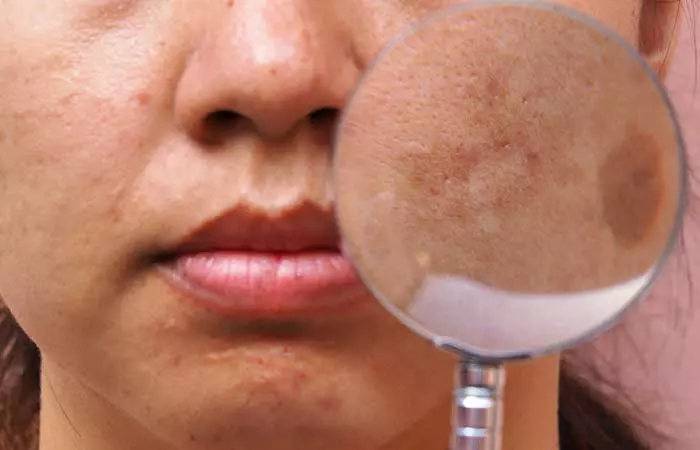
Also known as chloasma, melasma is a skin condition in which you get brown patches or spots on your skin. Since it is a common issue in women, especially dark skinned women, anyone can get this condition (1). Melasma is also known as the ‘mask of pregnancy’ when it appears in pregnant women.
Melasma usually appears on your face in three patterns:
- Centrofacial: affecting your nose, forehead, and upper lips
- Malar: affecting your cheeks
- Mandibular: affecting your chin and jawline
One study says that centrofacial pattern is the predominant pattern that appears in 50-80% of the cases of melasma
(1). Pigmentation and discoloration may also appear on your neck and shoulders. While it is not harmful, women tend to become a bit self-conscious about their appearance.
A study published in the Journal of Drugs in Dermatology found that the prevalence of melasma in Latina women in the United States was around 8.8%. It was further estimated that the condition affects up to 14.5% of Arab-American women and is the fifth most common skin condition in the United States (2).
 Trivia
TriviaSo, do you need to be scared of any spots or marks on your skin? Definitely not. There’s a very subtle difference between melasma and hyperpigmentation. Here’s what you need to know…
Key Takeaways
- Melasma is a skin condition that may cause brown patches or spots to appear on your skin.
- It usually appears on your nose, forehead, and upper lips, also affecting your cheeks, chin, and jawline
- Avoid spending too much time in the sun when pregnant and wear sunscreen with a high SPF.
- Treatments for melasma include microdermabrasion, laser therapy, and chemical peels using hydroquinone.
- Home remedies such as lemon, potato, and aloe vera may lighten the skin.
Melasma And Hyperpigmentation: What’s The Difference?
Many of you may confuse melasma with hyperpigmentation. Well, let me clarify one thing here. Hyperpigmentation is a very broad term, and it refers to any skin condition in which skin discoloration or dark patches may appear due to any number of factors. For instance, scarring caused by acne, pimples, or boils and marks caused by sun exposure, eczemai A chronic condition with periodic flare-ups, causing dryness, itchiness and inflammation of the skin. , or psoriasisi A non-contagious autoimmune disorder in which skin cells accumulate and develop into scales and dry, itchy patches on the skin. – all come under hyperpigmentation. This means any discoloration of skin can be called hyperpigmentation.
Melasma is a bit tricky. It is a type of hyperpigmentation that is mainly triggered by UV exposure and hormonal factors. Compared to traditional hyperpigmentation (which lingers on the top surface of the skin), melasma is much deeper (it can go deep into your skin’s layers) and tough to treat. Let’s explore its causes in detail.
What Causes Melasma During Pregnancy?
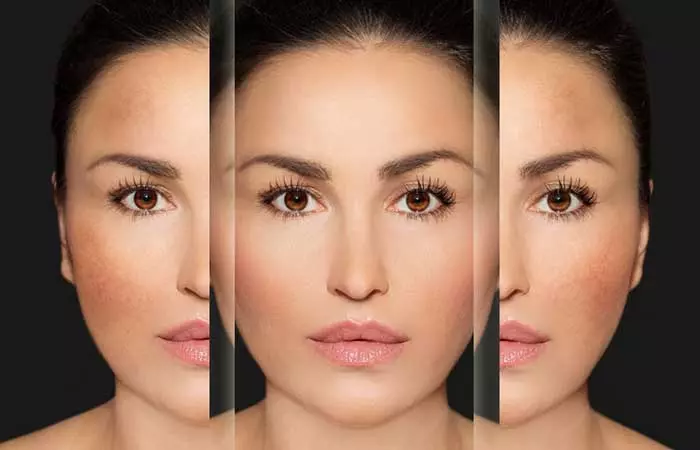
The exact cause of melasma is not entirely understood (1). But experts believe that UV exposure is one of the main factors that cause melasma. Several other factors are also believed to trigger melasma during pregnancy. These include:
- Race
- Anti-seizure medications
- Family history of melasma
- Low Hemoglobin
- Undue stress
- Medicines given to sustain pregnancy
- Any chronic medical illness
Another study, however, blames your hormones for wrecking your skin with spots and pigmentation.
It found that high levels of hormones, such as progesterone, estrogen, and melanocortin, triggered melasma during pregnancy. It also found that women who developed Melasma by usingoral contraceptives in the past were susceptible to get Melasma during pregnancy as well (3). Another study found that women with hypothyroidismi A disorder in which the thyroid gland does not adequately generate thyroid hormone, affecting metabolism, heart rate, and body temperature. also suffered from this condition (4).
This means any one factor or a combination of factors, along with UV exposure, can cause melasma. The “pregnancy mask” may go away after childbirth (if caused by your hormones), or it may take a few months’ time and treatment. If you notice any skin discoloration or patches that are darker than your skin tone, consult a dermatologist for a proper diagnosis.
Melasma Diagnosis
Usually, a dermatologist can determine whether it is melasma or not by merely running a visual examination. However, they may perform several other tests to rule out any other underlying factors.
When diagnosing melasma, the doctor may also perform a Wood’s Lamp Examination. In this procedure, a particular type of light is held close to your skin to determine whether your skin is affected by any fungi and bacteria. It also helps in determining how many layers of your skin are affected by melasma.
How To Prevent Melasma During Pregnancy: Treatments And Remedies
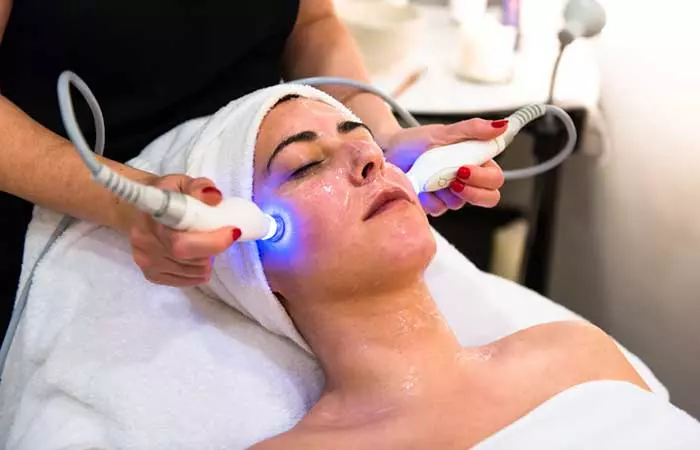
When treating this particular type of hyperpigmentation during pregnancy, remember that the results may differ from person to person. For some women, melasma may disappear without any treatment (after they deliver the child or stop taking contraceptive pills), and for some, it may not go away that easily.
Dermatologists usually prescribe medicines such as:
- Hydroquinone (should not be used in pregnancy)
This medicine is widely used for treating melasma. Hydroquinone is available in gel, liquid, cream, and lotion forms. When applied topically, this medicine helps in fading the marks. Most of the creams containing hydroquinone are available over-the-counter. However, for some, you may need a doctor’s prescription. Generally, over-the-counter creams contain less amount of hydroquinone. Anything stronger than that requires a prescription.
- Tretinoin (should not be used in pregnancy)
Dermatologists often prescribe tretinoin or corticosteroids along with other medicines. This is just to enhance the effect of skin lightening. If the melasma is severe, dermatologists may suggest a cream that contains hydroquinone, tretinoin, and corticosteroids. However, if pregnant, the dermatologist may not prescribe them as these should not be used in preganancy as they may cause adverse effects.
- Kojic acid, glycolic acid, Arbutin or azelaic acid
The doctor may even prescribe kojic acid or azelaic acid to lighten the spots.
If medicines do not work on your skin and are not effective, there are other procedures to treat the condition. The possible options include:
- Chemical Peeling
In this process, the doctor applies glycolic acid or a similar abrasive chemical on the affected area. This creates a mild chemical burn on that surface. The burned layer is then peeled off, exposing fresh skin that is devoid of spots. However, if hormonal issues are the cause of your melasma, chemical peeling may not work unless you resolve your hormonal imbalance.
- Dermabrasion And Microdermabrasion
Both are medical procedures where the doctor uses an abrasive material to sand off the top layer of your skin. They use a machine to exfoliate your skin and strip away the dead skin cells, thus gently lifting and removing the affected layer of your skin. You may have to undergo multiple sessions to treat your melasma thoroughly. This is slow method and might not help everyone.
- Laser Treatment
Laser treatments can be restorative or dual fractional and target only the affected area. However, this treatment is pretty expensive, and you may need multiple sessions to eliminate melasma completely.
Sarah, a YouTube vlogger, shares her experience with melasma and how she treated it. She states that her first encounter with hyperpigmentation was while she was on birth control pills. It went away and came back when she was pregnant. She could reduce it in 1-2 months, even though it is not entirely gone. She recommends a few products, like skin peel, that remove the dead skin cells at night. She also used a vitamin C serum and a 2% hydroquinone cream and observed, “Hydroquinone is not the safest product, but it works. It fades dark spots for a more even skin tone (i).”
No medication or cosmetic procedure will work if your hormones are causing the condition. Moreover, no treatment can offer permanent results. So, the best thing is to do is to take preventive measures so that the melasma does not return. Now, your hormones are not in your control, so you cannot actually do anything if they are the cause of your melasma. But otherwise, you may take the following measures to keep your skin safe from hyperpigmentation during pregnancy:
1. Use Sunscreen Whenever You Go Out
UV exposure is your skin’s biggest enemy, and because it is one of the factors that trigger melasma, wearing sunscreen is a must. Always use a sunscreen that has a broad spectrum and an SPF of 30 or more.
2. Use Broad-Brimmed Hats And Umbrellas
Apart from sunscreen, wearing a broad-brimmed hat or carrying an umbrella also helps in shielding a major portion of your exposed skin. Whenever you are outside, try to stay in the shade.
3. Don’t Stress Out!
Stress worsens melasma. So, even if you notice spots and pigmentation on your skin, do not freak out. Relax and try remedies to treat them. To reduce stress, you may even consider meditation, listening to music, or just treat yourself to a bubble bath.
4. Use Your Medicines Without Fail
Use the medicines prescribed by your doctor regularly and at intervals suggested by them. This will help get rid of the spots faster.
5. Stay Hydrated
Drink plenty of water to keep your skin hydrated and maintain its elasticity. Proper hydration can support skin resilience, making it less prone to the effects of hyperpigmentation.
6. Consult Your Dermatologist Regularly
Check in with a dermatologist to get personalized skincare advice throughout your pregnancy. Regular consultations ensure your regimen is tailored to your skin’s changing needs and safe for both you and your baby.
You need to be diligent with these preventative measures. Though you may need to consult a dermatologist for melasma, you can try some home remedies for skin pigmentation in mild cases. Here are a few ingredients that you can use to reduce mild dark spots and marks.
Home Remedies For Hyperpigmentation
1. Lemon

Lemon contains citric acid, which makes it an excellent skin whitening agent. It also reduces dark spots and blemishes (5).
You Will Need
- 2 tablespoons fresh lemon juice
- Water
- Cotton balls
What To Do
- Dilute the lemon juice with some water.
- Dip the cotton ball in it and apply to the affected area.
- Leave it on for 15 minutes before washing it off.
Note: Lemon juice may cause irritation – so, use it in small amounts. Avoid if your skin is sensitive.
2. Potato

Potato contains azelaic acid, which helps in reducing tyrosinase activity. This helps in reducing spots and pigmentation (6). Azelaic acid is also often prescribed for melasma. So, you can use potato for treating melasma and any other form of hyperpigmentation.
You Will Need
1 raw potato
What To Do
- Grate the potato and squeeze out its juice.
- Apply the juice to the spots and let it dry.
- Wash off with lukewarm water.
- Repeat every day.
3. Turmeric
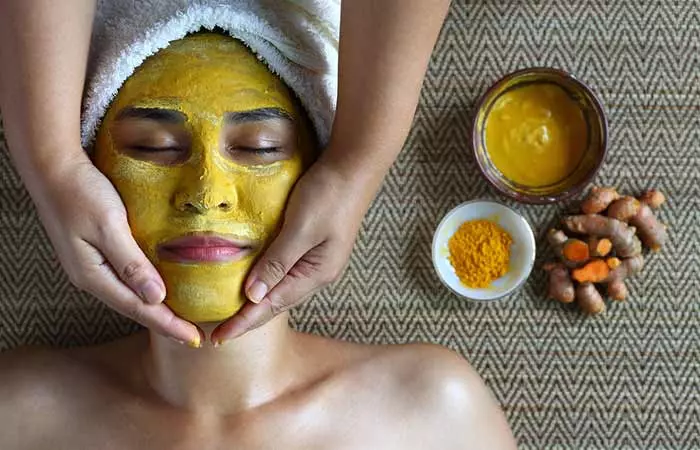
Turmeric contains curcumin that reduces melanoma cells, thus lightening your dark spots and blemishes. It also helps in reducing tyrosinase activity (7).
You Will Need
- 1 teaspoon raw turmeric paste
- ½ teaspoon diluted lemon juice
What To Do
- Mix both the ingredients and apply the paste to your face.
- Leave it on to dry before washing it off.
- Repeat until the spots vanish.
 Quick Tip
Quick Tip4. Aloe Vera
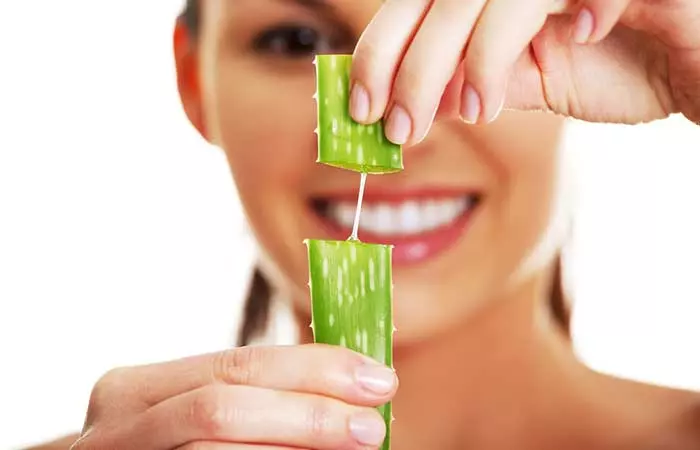
Aloe vera contains aloin, an ingredient that has skin lightening effects (8). It removes dead skin cells and boosts cell regeneration. It is also effective in treating and soothing pregnancy rashes.
You Will Need
1 teaspoon fresh aloe vera gel
What To Do
- Apply aloe vera gel to the affected areas before going to bed.
- Leave it on overnight and wash it off the next day.
- Follow this religiously every day.
5. Orange Peel

A study has proven that orange peel powder has anti-tyrosinase activity that can reduce dark spots and whiten the skin (9).
You Will Need
- 1 tablespoon orange peel powder
- 1 teaspoon milk
- 1 teaspoon honey
What To Do
- Mix all the ingredients and make a paste.
- Add water if the consistency is too thick.
- Apply it to the spots and leave it on for 20 minutes.
- Wash it off later.
6. Soy
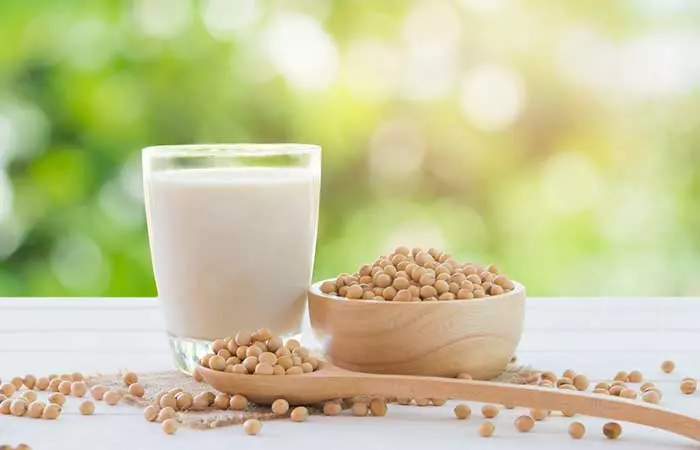
Soy contains phospholipids, isoflavones, and soybean trypsin inhibitors (STI) that can inhibit the activity of trypsin and melanogenesis, thus reducing hyperpigmentation (8).
You Will Need
- 1 tablespoon soy milk
- 1 tablespoon lemon juice
- 1 tablespoon tomato juice or pulp
What To Do
- Mix all the ingredients in a bowl.
- Apply the paste to the affected area or the entire face.
- Gently massage for 10 minutes. Leave it on to dry.
- Wash it off.
7. Licorice

Licorice can inhibit melanin and inhibit cyclooxygenase activity, thus reducing the production of free radicals. It also contains glabridin that prevents pigmentation induced by UV ray exposure (10).
You Will Need
- 1 tablespoon licorice powder
- 1 teaspoon red sandalwood powder
- 1 teaspoon honey
- 1 tablespoon rosewater
- 1 teaspoon yogurt
What To Do
- Mix all the ingredients to make a paste.
- Apply all over your face or just the affected area. Let it dry.
- Wash with water.
8. Pomegranate
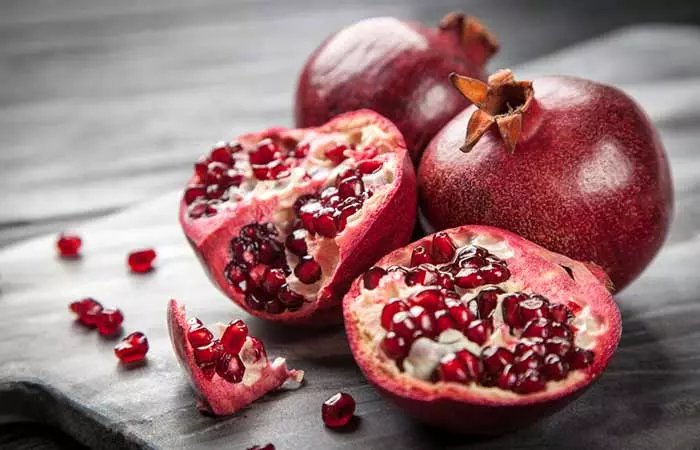
Pomegranate contains ellagic acid, which is an antioxidant that prohibits melanin production and reduces hyperpigmentation (11).
You Will Need
- 2 tablespoons pomegranate juice or powder
- 1 tablespoon bentonite clay
- Water (in case you are using pomegranate powder)
What To Do
- Mix both the ingredients in a bowl.
- Apply to the affected area and leave it on for 20 minutes.
- Wash it off.
9. Cranberry

Cranberries contain arbutin, which is a natural derivative of hydroquinone. Therefore, it can effectively reduce hyperpigmentation (12). You can even use it for treating melasma.
What You Need
- 1 cup cranberries
- 1 tablespoon cinnamon powder
- 1 teaspoon manuka honey
What To Do
- In a food processor, blend all the ingredients to make a paste.
- Apply the paste all over your face or just on the affected area.
- Let it dry and then wash off.
10. Yogurt
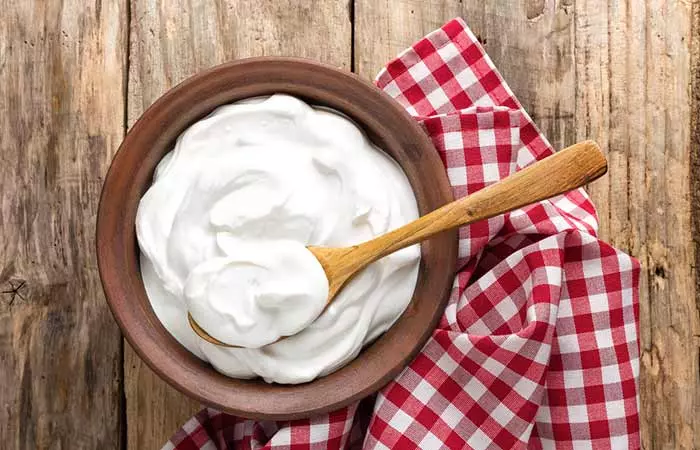
Yogurt contains alpha-hydroxy acids or AHAs, which are widely used for chemical peeling. It also contains citric and glycolic acids that help in reducing hyperpigmentation (13).
You Will Need
- 1 tablespoon yogurt
- 1 teaspoon honey
- 1 teaspoon oats (finely ground)
What To Do
- Mix all the ingredients.
- Apply the mixture all over your face.
- Leave it for on 20 minutes before washing it off.
11. Tomato

Tomatoes contain lycopene, an antioxidant that helps reduce oxidative stress. Studies found that tomato supplements and applying topical lycopene could help reduce melasma (14), (15).
You Will Need
- 1 ripe tomato
- 3-4 drops of lemon juice
What To Do
- Cut the tomato into small pieces and blend them to form a smooth tomato puree.
- Mix 2 tablespoons of the tomato puree with some lemon juice.
- Apply the mixture evenly to your face, focusing on areas with hyperpigmentation.
- Allow the face pack to sit for about 5-10 minutes.
- Rinse it off with lukewarm water, massaging your skin lightly in circular motions.
- Use this face pack 1-2 times daily.
Melasma and hyperpigmentation during pregnancy are pretty common. You don’t need to get scared if spots appear on your face and other parts of your body. While you may not be able to get rid of melasma completely and there is no assurance that it will not recur, you can keep the spots away with proper care and preventive measures.
Melasma and pigmentation during pregnancy are caused by several factors, one of which is UV exposure. Therefore, if spots occur on your face or other parts of your body, do not be alarmed. You may not completely eliminate melasma, and there is no guarantee that it will not return. So, all you do is, keep the spots at bay with good treatment and prevention.
Infographic: Who Can Get Melasma?
Melasma is a skin condition that occurs in pregnant people. Though pregnant people are more prone to melasma, there are also other groups of people who are at risk of this condition. For example, a dark-skinned person living in a tropical region may develop melasma more than a light-skinned person.
Check out the infographic below to learn who can get melasma other than pregnant people. Illustration: StyleCraze Design Team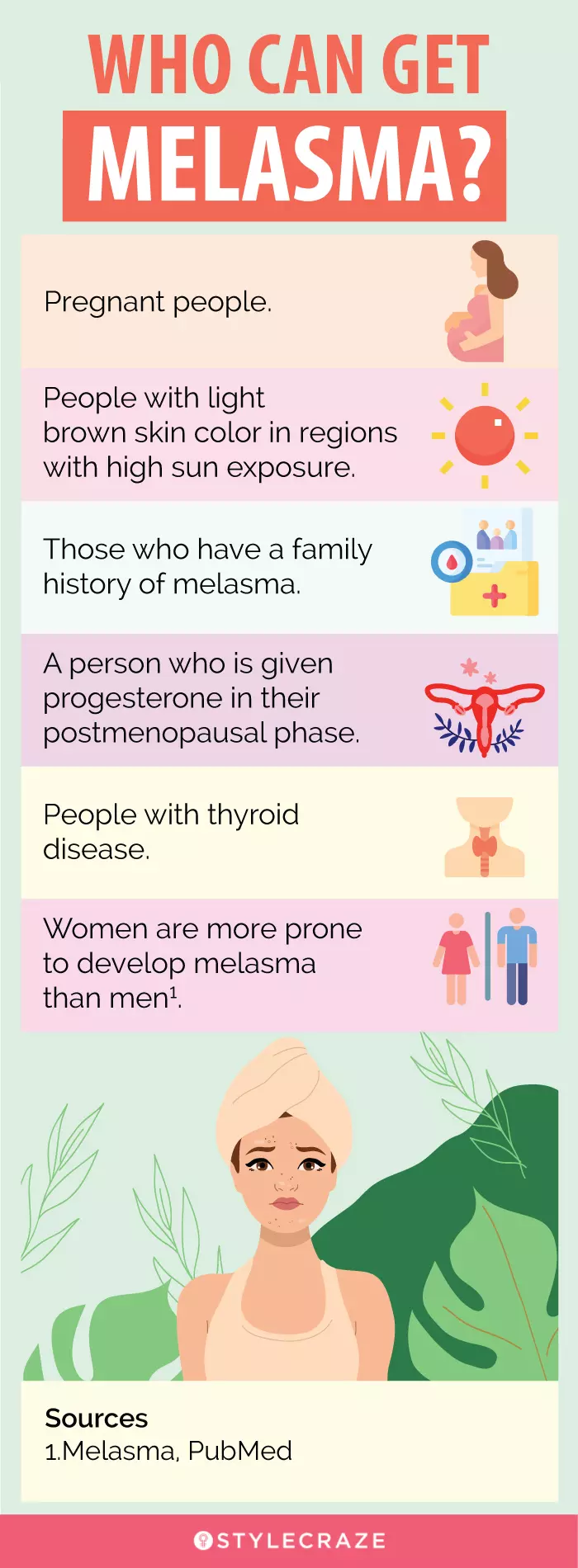
Melasma and pigmentation during pregnancy are caused by several factors, one of which is UV exposure. Therefore, if spots occur on your face or other parts of your body, do not be alarmed. While you may need to see a dermatologist for melasma, you can treat any other type of hyperpigmentation using home remedies. However, you may not completely eliminate melasma, and there is no guarantee that it will not return. So, all you do is, keep the spots at bay with good treatment and prevention. Include any of the suggested home remedies in your pregnancy skin care routine and maintain healthy-looking skin.
Frequently Asked Questions
Does melasma affect my baby?
No, melasma will not affect your unborn baby or pregnancy outcomes.
What vitamins are good for melasma?
Vitamins A, C, and E are commonly used to manage melasma. A deficiency in vitamin B12 has been associated with the occurrence of melasma, so it may be included from dietary sources during pregnancy as a preventive measure (16).
What foods make melasma worse?
Foods such as soy, flaxseeds, chickpeas, and black beans contain chemical estrogens and may contribute to hormone-induced hyperpigmentation, such as melasma.
Can low iron cause melasma?
Research suggests that there may be an association between low iron levels and melasma (17). However, more studies are warranted in this regard to further understand the link and get more conclusive evidence.
Illustration: How To Prevent Pigmentation (Melasma) During Pregnancy
_during_pregnancy_illustration.jpg.webp)
Image: Stable Diffusion/StyleCraze Design Team
Pregnant? Worried about skin darkening and pigmentation? Watch this video featuring a certified dermatologist to learn about its causes and treatments. Get expert advice now!
Personal Experience: Source
StyleCraze's articles are interwoven with authentic personal narratives that provide depth and resonance to our content. Below are the sources of the personal accounts referenced in this article.
i. How I Got Rid of my Melasma aka Pregnancy Dark Spothttps://www.youtube.com/watch?v=AfSV_DfuG8E
References
Articles on StyleCraze are backed by verified information from peer-reviewed and academic research papers, reputed organizations, research institutions, and medical associations to ensure accuracy and relevance. Read our editorial policy to learn more.
- Melasma: an Up-to-Date Comprehensive Review
https://www.ncbi.nlm.nih.gov/pmc/articles/PMC5574745/ - Melasma’s Impact on Quality of Life
https://jddonline.com/articles/melasmas-impact-on-quality-of-life-S1545961620P0184X - Melasma: a clinical and epidemiological review
https://www.ncbi.nlm.nih.gov/pmc/articles/PMC4155956/ - Study of Hormonal Profile in Female Melasma Patients In a Tertiary Care Hospital
https://www.jemds.com/data_pdf/Kiran%20Kumre-.pdf - The Hunt for Natural Skin Whitening Agents
https://www.ncbi.nlm.nih.gov/pmc/articles/PMC2801997/ - Health Benefits and Cons of Solanum tuberosum
https://www.plantsjournal.com/vol1Issue1/Issue_jan_2013/3.pdf - Curcumin inhibits melanogenesis in human melanocytes
https://pubmed.ncbi.nlm.nih.gov/21584871/ - Cosmeceuticals for Hyperpigmentation: What is Available?
https://www.ncbi.nlm.nih.gov/pmc/articles/PMC3663177/ - Anti-tyrosinase activity of orange peel extract and cosmetic formulation
http://www.ifrj.upm.edu.my/24%20(05)%202017/(40).pdf - The inhibitory effect of glabridin from licorice extracts on melanogenesis and inflammation
https://pubmed.ncbi.nlm.nih.gov/9870547/ - Inhibitory Effect of Dried Pomegranate Concentration Powder on Melanogenesis in B16F10 Melanoma Cells; Involvement of p38 and PKA Signaling Pathways
https://www.ncbi.nlm.nih.gov/pmc/articles/PMC4632747/ - Mechanisms Regulating Skin Pigmentation: The Rise and Fall of Complexion Coloration
https://www.ncbi.nlm.nih.gov/pmc/articles/PMC2769151/ - Randomized clinical efficacy of superficial peeling with 85% lactic acid versus 70% glycolic acid
https://www.ncbi.nlm.nih.gov/pmc/articles/PMC3900339/ - The effectiveness of tomato extract on superoxide dismutase (SOD) and severity degree of patients with melasma
https://pubmed.ncbi.nlm.nih.gov/35707866/ - A double-blind placebo-controlled randomized trial of skin-lightening cream containing lycopene and wheat bran extract on melasma
https://pubmed.ncbi.nlm.nih.gov/33151615/ - Prevalence of Serum-Vitamin D Abnormalities Periodontitis and Anaemia in Patients With Melasma
https://classic.clinicaltrials.gov/ct2/show/NCT03241381 - The association between melasma and iron profile: a case-control study
https://www.researchgate.net/publication/342682511_The_association_between_melasma_and_iron_profile_a_case-control_study
Read full bio of Dr. Surbhi Mahajan
Read full bio of Ramona Sinha
Read full bio of Eshna Das
Read full bio of Shiboli Chakraborti






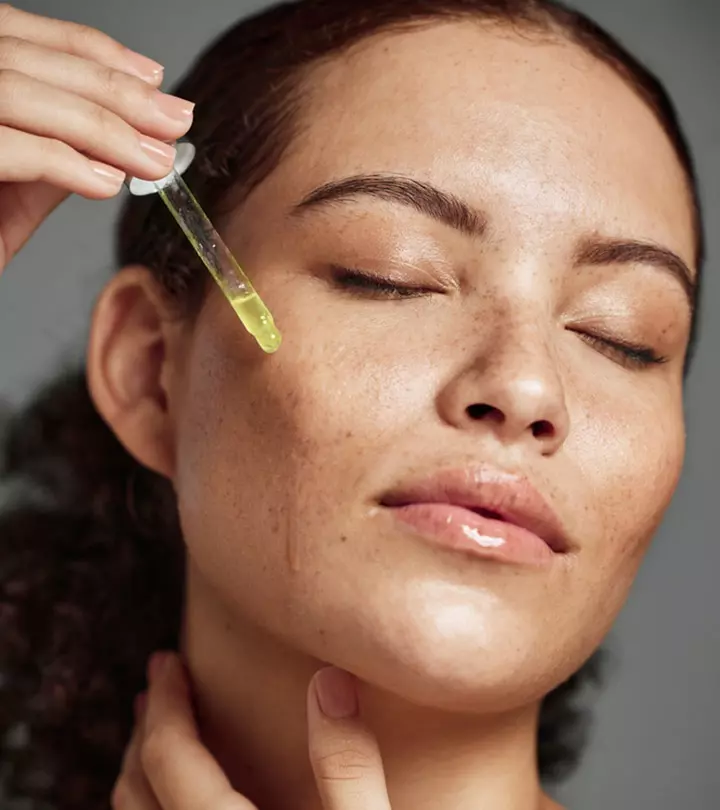



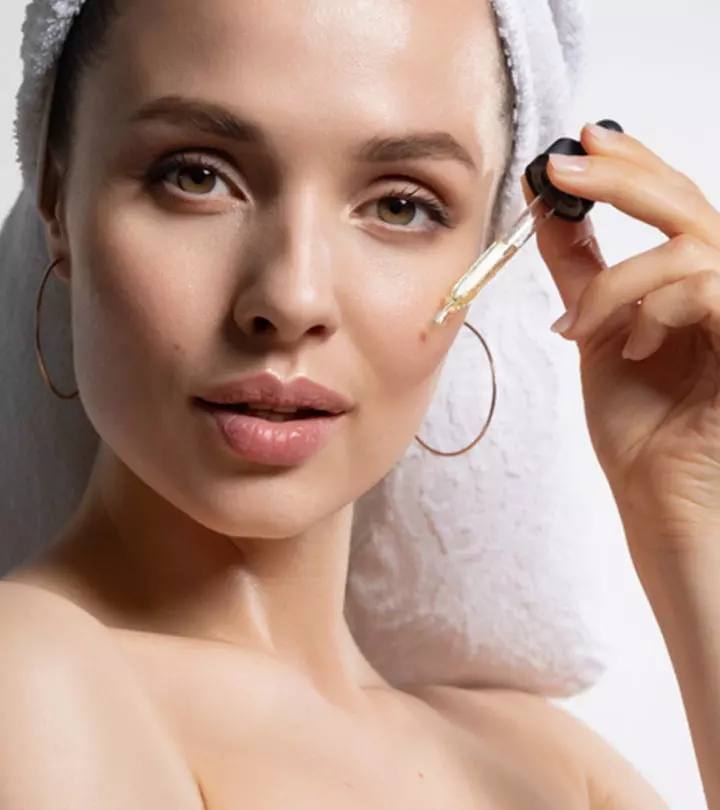

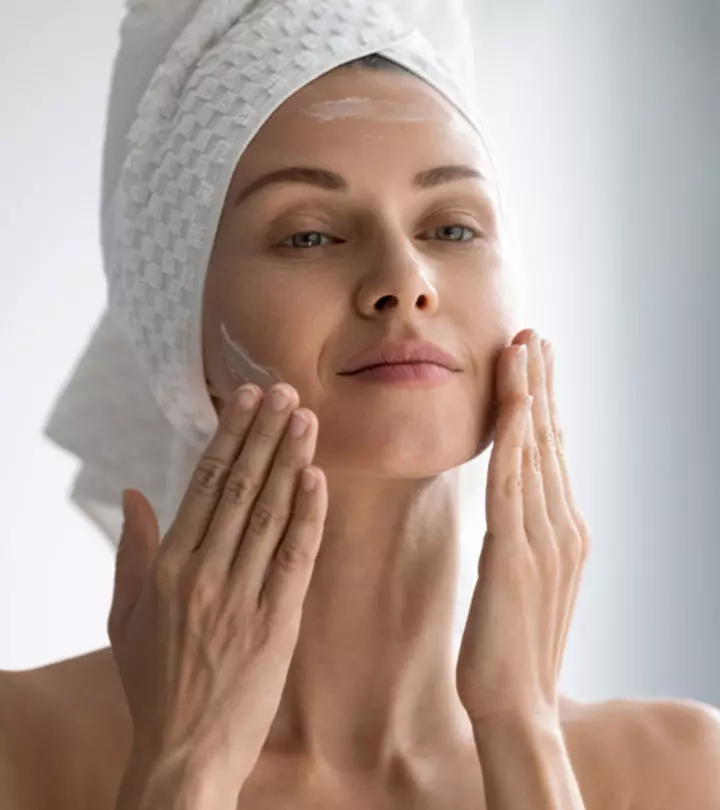
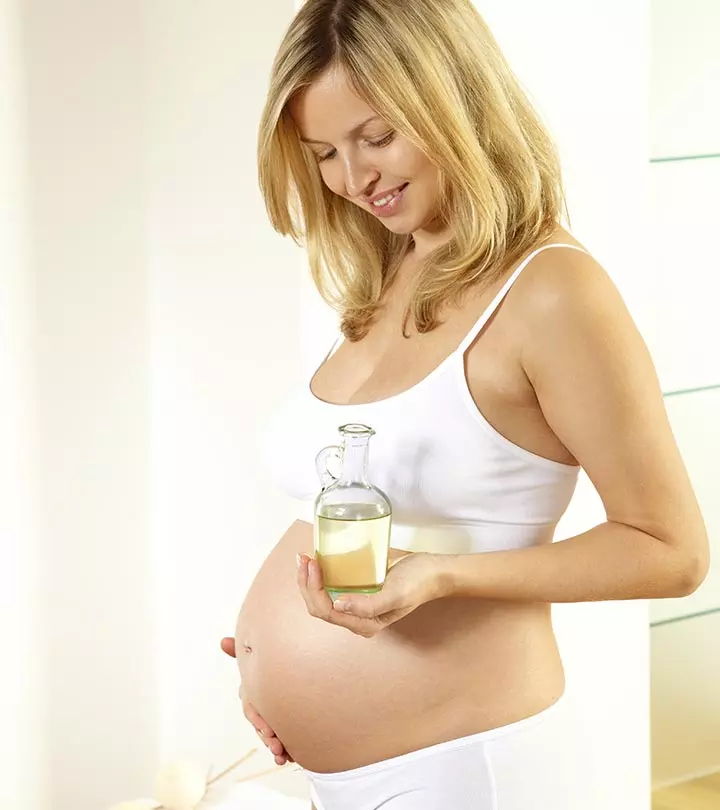
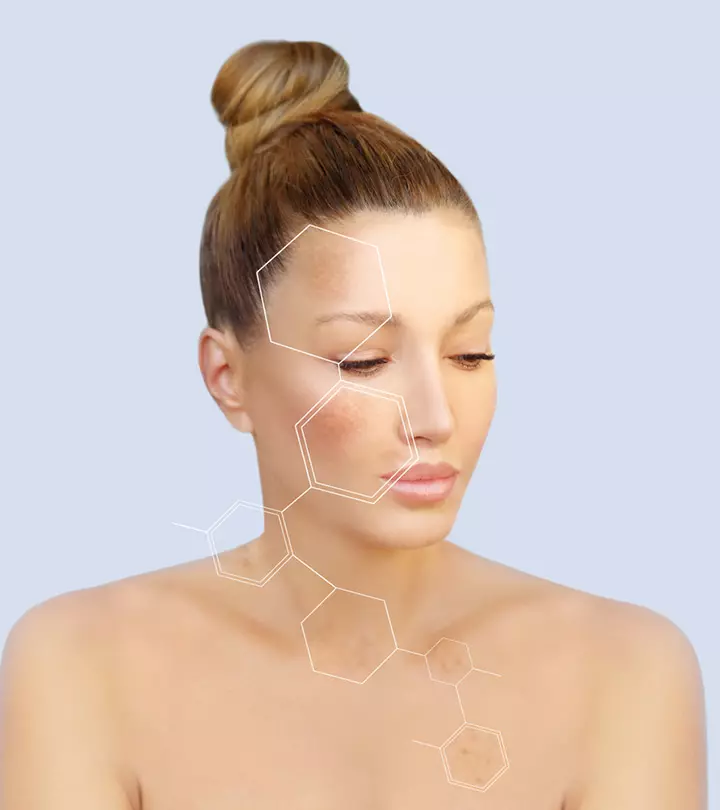
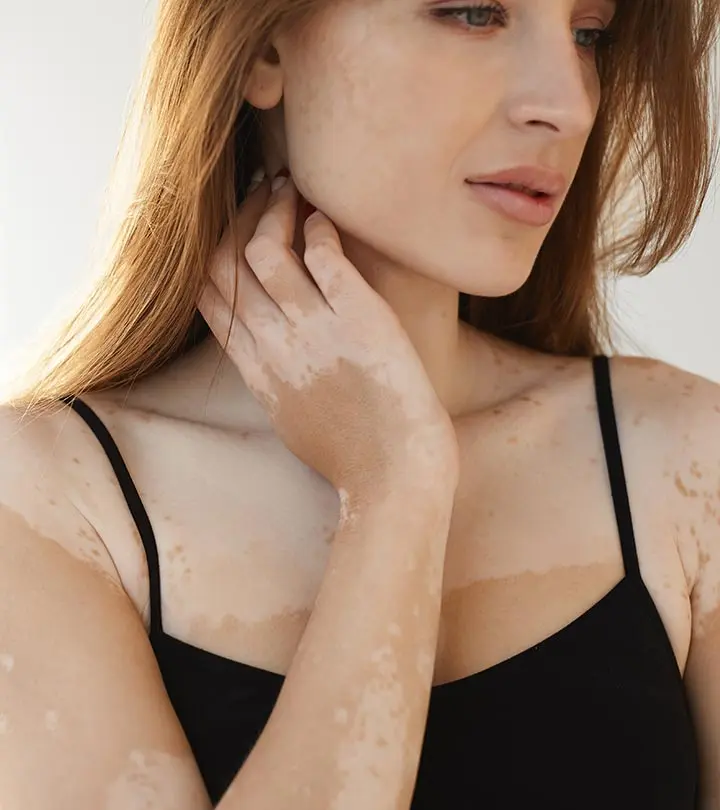


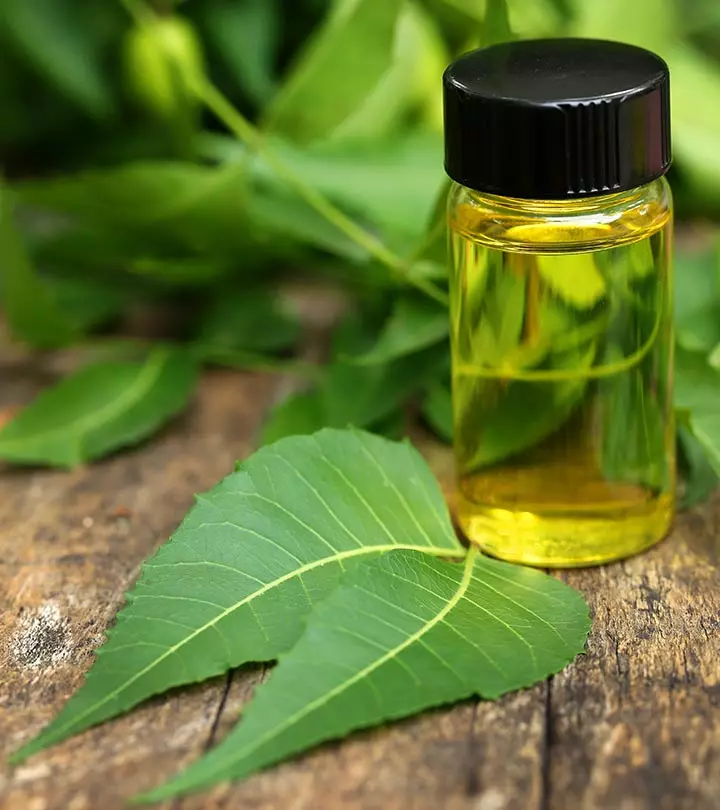



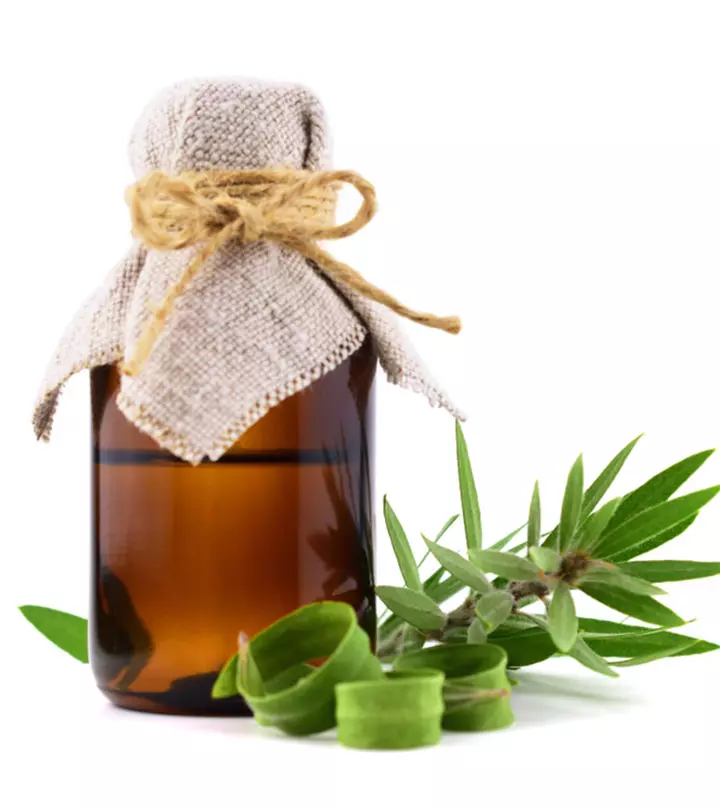
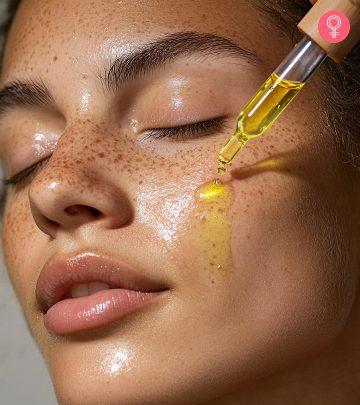
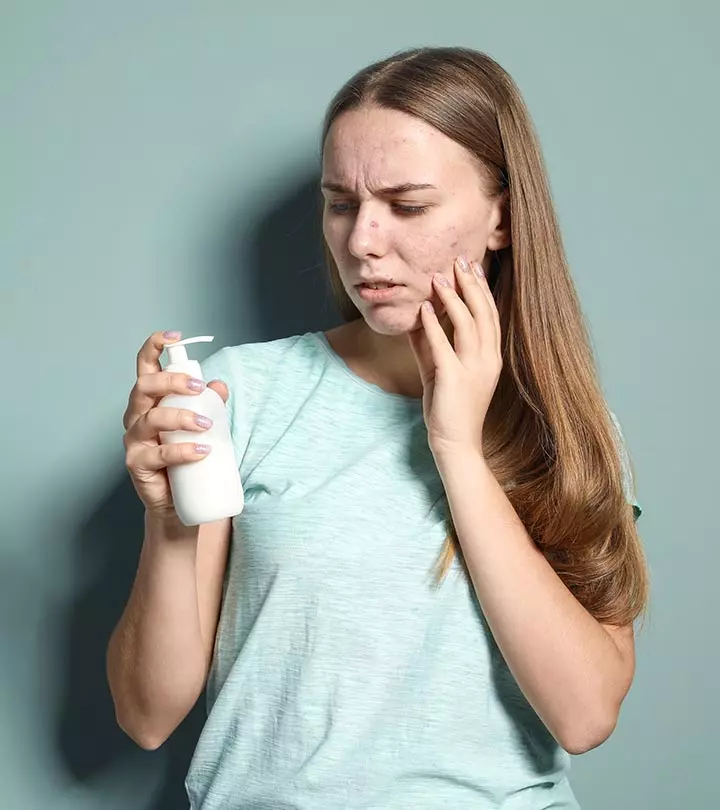
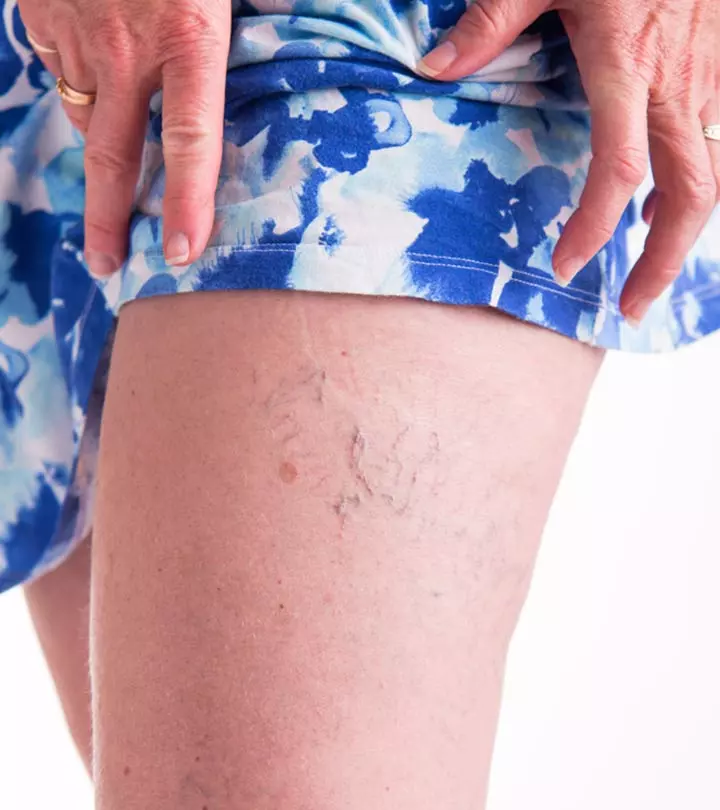

Community Experiences
Join the conversation and become a part of our empowering community! Share your stories, experiences, and insights to connect with other beauty, lifestyle, and health enthusiasts.